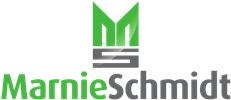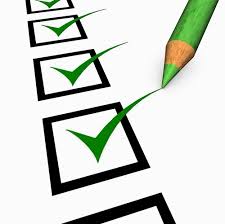 8.5.1 Control of production and service provision
8.5.1 Control of production and service provision
Hello everyone! The great news this week is that we get to open a new chapter in the standard. We switch gears from external to internal. Previously we discussed the controls necessary to ensure any external providers do not impact our ability to provide consistent delivery of a quality product/service to the customer.
Now, we have to look inside to see what we must do to put our best foot forward as well. Like previously discussed with outsourcing, certain information must be available if we are to meet expectations.
“The organization shall implement controlled conditions for production and service provision, including delivery and post-delivery activities.” Delivery and post-delivery activities include things such as logistics, shipping, returns, ongoing service such as subscription or auto-delivery, drop shipping, etc. This opens the playing field to the requirement of having the following information for more than just the manufacturing or transactional service process.
“Controlled conditions shall include, as applicable;
a) the availability of documented information that defines the characteristics of the products and services;” As we attempt to set up our production/service process, this information should have already been defined long ago during 8.2 Determination of requirements for products and services. So, we should be able to continue moving right along. But please note, it is a “documented information” required sort of thing.
“b) the availability of documented information that defines the activities to be performed and results to be achieved;” This is where many companies’ quality management systems begin to disintegrate and fragment into tiny pieces. This one little bullet point, if recognized and dealt with properly can make or break the user friendliness and manageability (in terms of documentation) of the whole ball of wax. That’s simply my opinion, but as “root causes” go in terms of disappointed ISO9001 quality management system users, this is the most common one I’ve seen. As we create controls for production/service, there are a multitude of tools available. We must “define the activities to be performed and the results to be achieved”. If we choose one best method, a large bulk of the supporting documentation can follow this one pivot point. Unfortunately, things don’t typically go this way. Instead, we get document crazy – the documentation gets away from us – and users are frustrated.
Many organizations will start this section by using a control plan, which is great to meet the requirements of “define the activities to be performed” and “the results to be achieved”. But later, additional layers are added such as procedures, work instructions, training documents, and on and on until the number of documents is unmanageable and ultimately the system becomes so cumbersome that users begin to squirrel away their own notes in order to work their production process. This is a shame and is completely unnecessary.
In every case, I recommend that creators or modifiers of a quality management system consider this one key point first and as a pivot point for their entire system. If a control plan is to be used – leverage the use of this popular tool to function as your “documented information” (in lieu of a procedure). It can also work as a work instruction. It can dual purpose as a training document also (assuming training is given in how to use, read and interpret a control plan), which can be converted into a training record as well. There is no need to create multiple documents which all basically say the same thing. The core requirements of this clause explain all the controls necessary to create a stable and robust production/service process. Keep this in mind as other requirements come up – ask yourself if you already have a tool which will work, rather than have a knee-jerk reaction to create more paper. OK – rant over. Let’s move on.
“c) monitoring and measurement activities at appropriate stages to verify that criteria for control of processes and process outputs, and acceptance criteria for products and services, have been met.” Again, a simple control plan will automatically include this information. If you don’t like the looks of a control plan, use any tool you like, but be sure to include this information.
“d) the use, and control of suitable infrastructure and process environment;” Many companies include process setup parameters including maintenance and readiness as a central part of their production and service provision. For example, there may be a startup process, routine checking and maintenance by the operator, a shutdown process, inspection of area & equipment, 5S checks, etc that may be integral to the whole process itself.
“e) the availability and use of suitable monitoring and measuring resources;” Control plans include this information, but again, if using a different format, just be sure to include the information.
“f) the competence and, where applicable, required qualification of persons;” We just talked about this last week when dealing with external providers. We must, of course include this information for our own internal processes as well. Keeping this linked with training (and avoiding additional documents whenever possible) is a great opportunity to keep our quality system as lean as possible.
“g) the validation, and periodic revalidation, of the ability to achieve planned results of any process for production and service provision where the resulting output cannot be verified by subsequent monitoring or measurement;” Processes must be validated and revalidated (and validated again) to ensure acceptable results. We cannot rely on inspection for quality, and in some cases, inspection is not even possible. So, validated processes are critical to controlled production/service.
“h) the implementation of products and services release, delivery and post-delivery activities.” All steps in the process, including release and shipment should be described and controlled.
THIS WEEK’S HOMEWORK
Review your approach to this clause as a whole. As the bullets tick off above, is your system fragmented or streamlined? Do you describe these bullets in multiple places? Ask yourself why? Is there an opportunity to consolidate? Are all of the bullets adequately addressed? Is this documented? Are you happy with your system? Next, ask how well controlled the processes actually are and how well they are performing. Are you getting the quality you expect after all the effort you’ve put into your quality system?
NOTE: It’s time to get a new reference document. Now that ISO9001:2015 has been published, we will begin using the newly published standard beginning next week.
Stay involved and engaged – SUBSCRIBE!
 8.5.4 Preservation
8.5.4 Preservation
 8.5.3 Property belonging to customers or external providers
8.5.3 Property belonging to customers or external providers 8.5.2 Identification and traceability
8.5.2 Identification and traceability 8.5.1 Control of production and service provision
8.5.1 Control of production and service provision 8.4.3 Information for external providers
8.4.3 Information for external providers 8.4.2 Type and extent of control of external provision
8.4.2 Type and extent of control of external provision 8.4.1 Control of externally provided products and services
8.4.1 Control of externally provided products and services 8.3.6 Design and development changes
8.3.6 Design and development changes 8.3.4 Design and development controls
8.3.4 Design and development controls